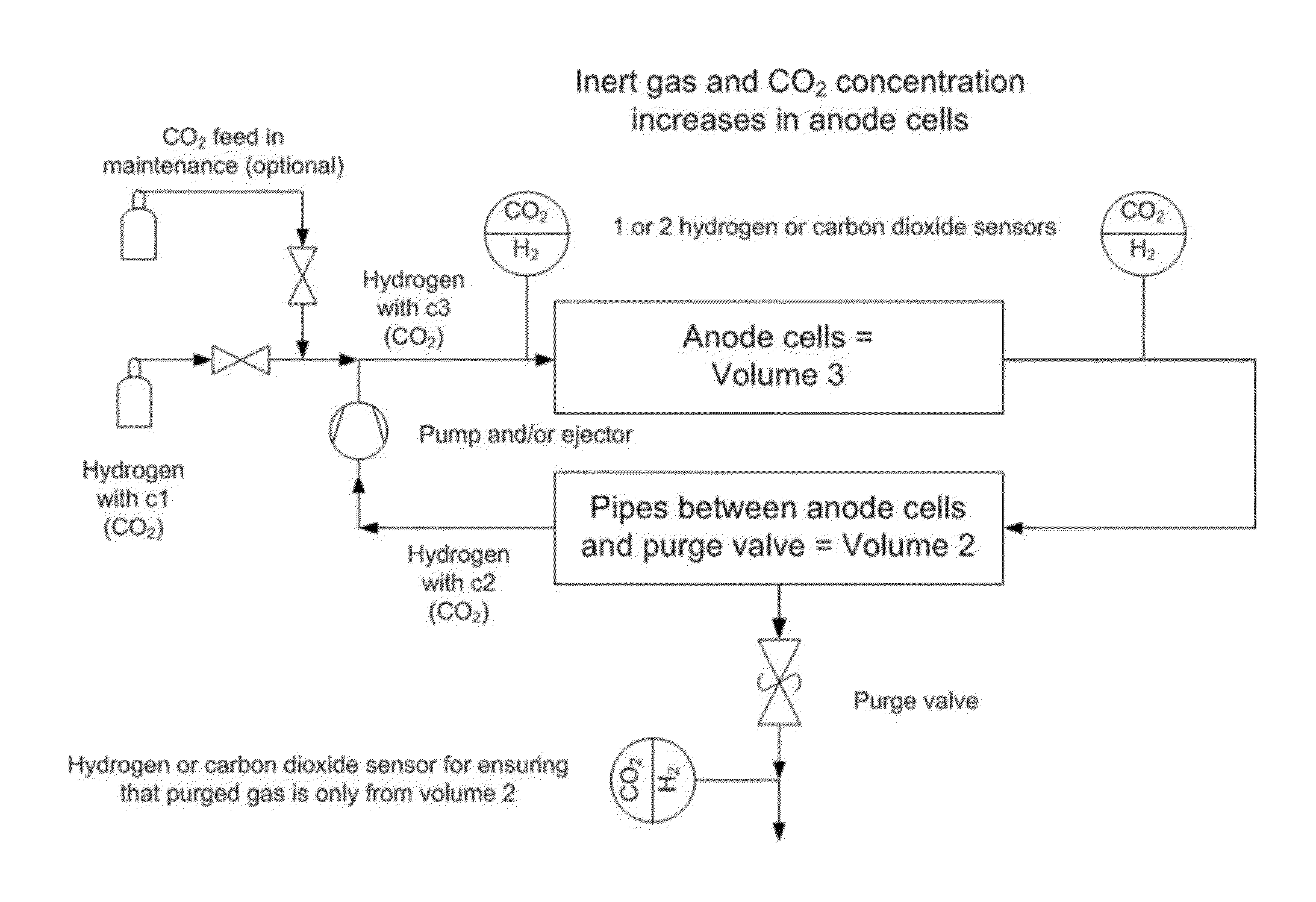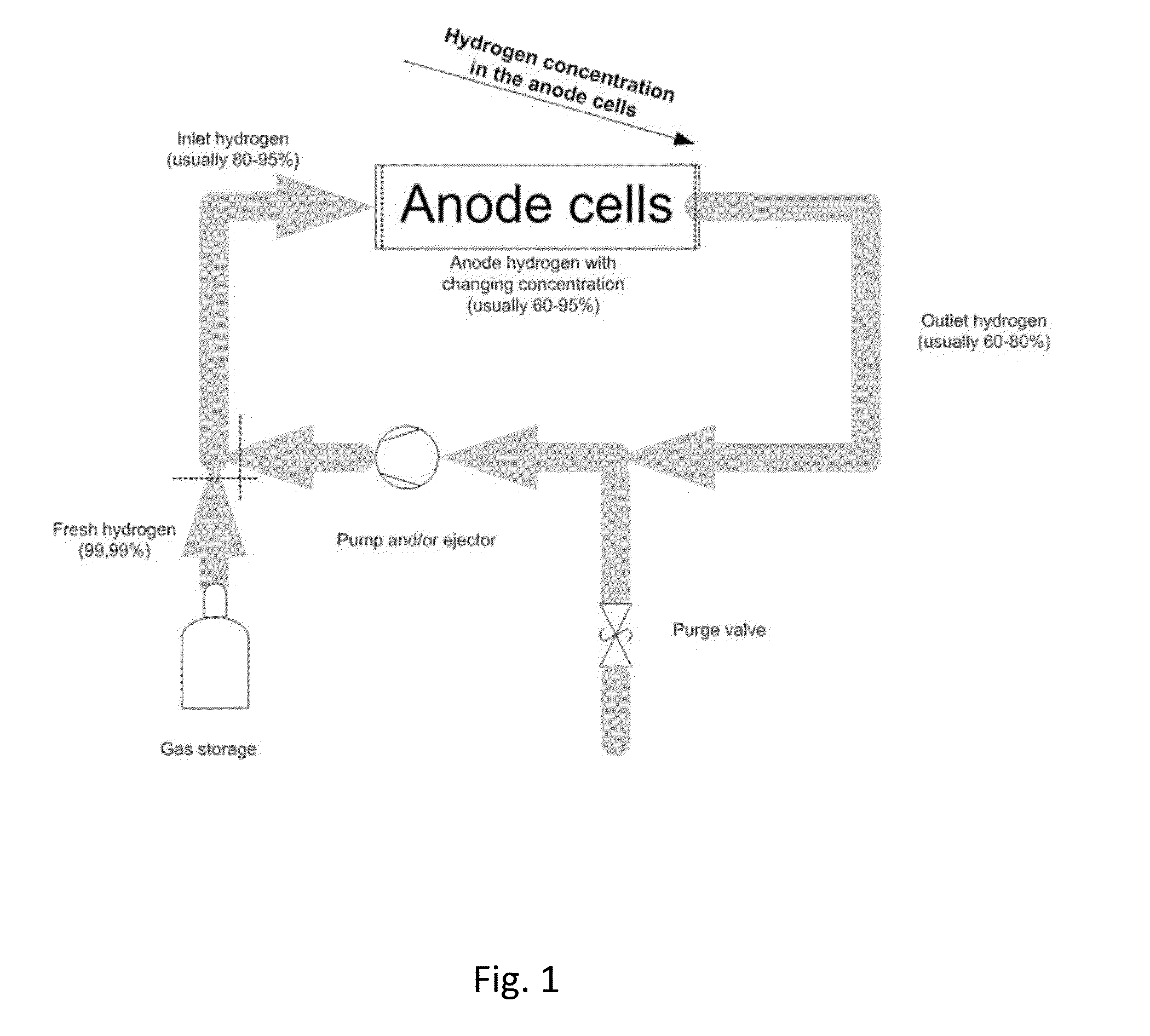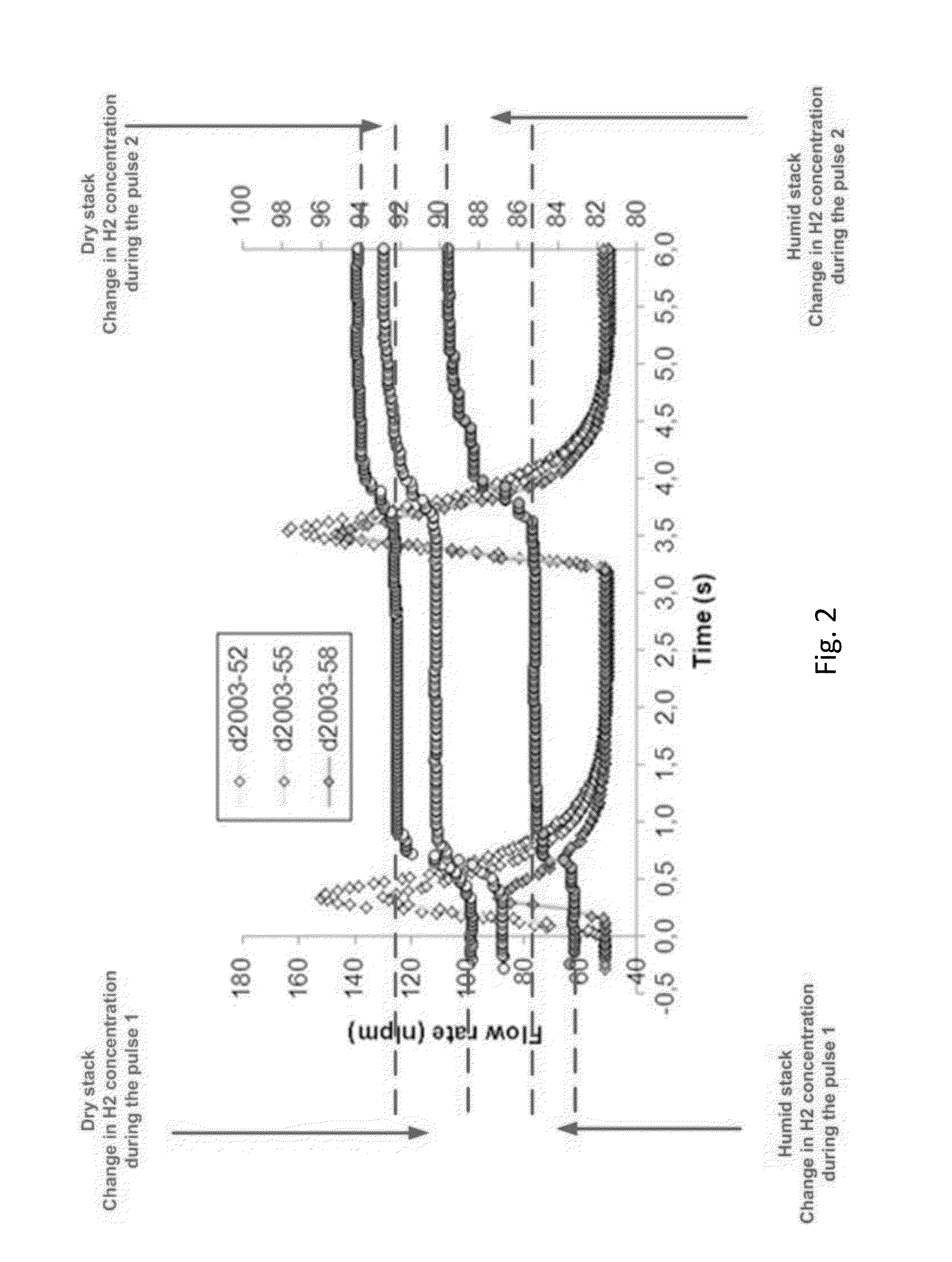Methods relating to monitoring fuel cells
a fuel cell and monitoring technology, applied in the field of fuel cells, can solve the problems of low pressure drop, no practical and accurate method for measuring the removal of water, and only possible use of differential pressure, and achieve the effect of low power operation
- Summary
- Abstract
- Description
- Claims
- Application Information
AI Technical Summary
Benefits of technology
Problems solved by technology
Method used
Image
Examples
Embodiment Construction
[0061]Multiple purge method for detecting water accumulation in anode gas channels
[0062]The water accumulation in anode channels is important to measure to optimize the duration and the frequency of purge during normal operation. In addition, the change (increase) in water accumulation under the same operation conditions can be used as diagnostic tool to estimate aging of the bipolar plate and GDL as aging of these components will increase water accumulation.
[0063]The practicality and accuracy of the method in this innovation can evaluated against the differential pressure drop method assuming pressure drop is large enough in the anode side of the stack.
[0064]The innovation can also be used for detection of bipolar plate and GDL aging on the cathode side, if fuel cell is arranged so that anode and cathode are interchanged.
[0065]However, the aging of cathode side components is easily seen from the pressure drop data. Pressure drop on the cathode side is significantly larger and the g...
PUM
| Property | Measurement | Unit |
|---|---|---|
| time period | aaaaa | aaaaa |
| pressure drop | aaaaa | aaaaa |
| time | aaaaa | aaaaa |
Abstract
Description
Claims
Application Information
 Login to View More
Login to View More - R&D
- Intellectual Property
- Life Sciences
- Materials
- Tech Scout
- Unparalleled Data Quality
- Higher Quality Content
- 60% Fewer Hallucinations
Browse by: Latest US Patents, China's latest patents, Technical Efficacy Thesaurus, Application Domain, Technology Topic, Popular Technical Reports.
© 2025 PatSnap. All rights reserved.Legal|Privacy policy|Modern Slavery Act Transparency Statement|Sitemap|About US| Contact US: help@patsnap.com



